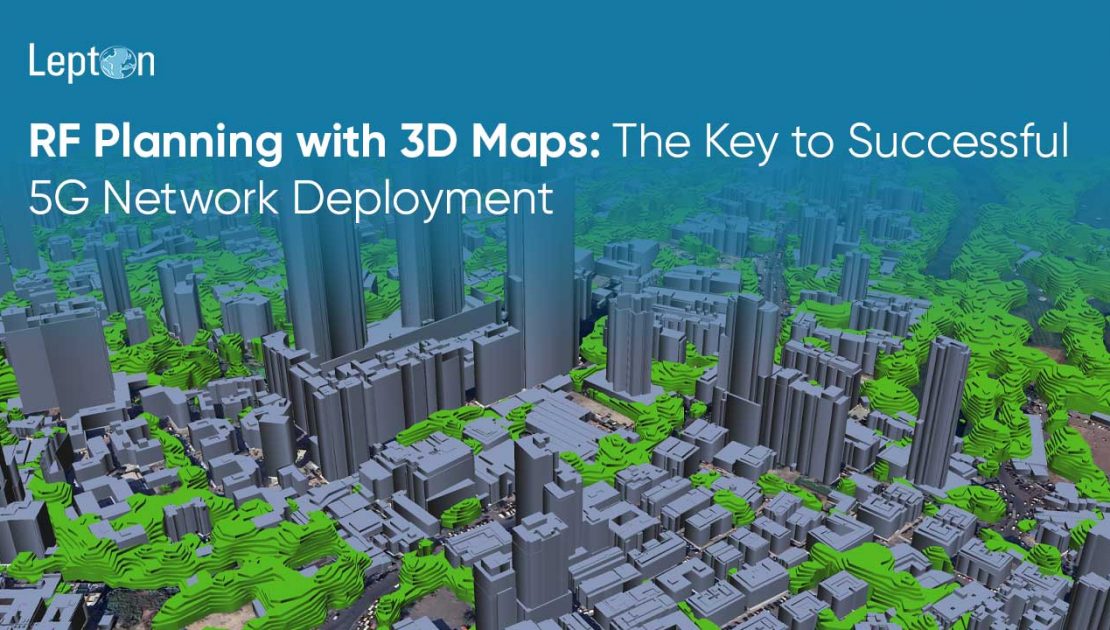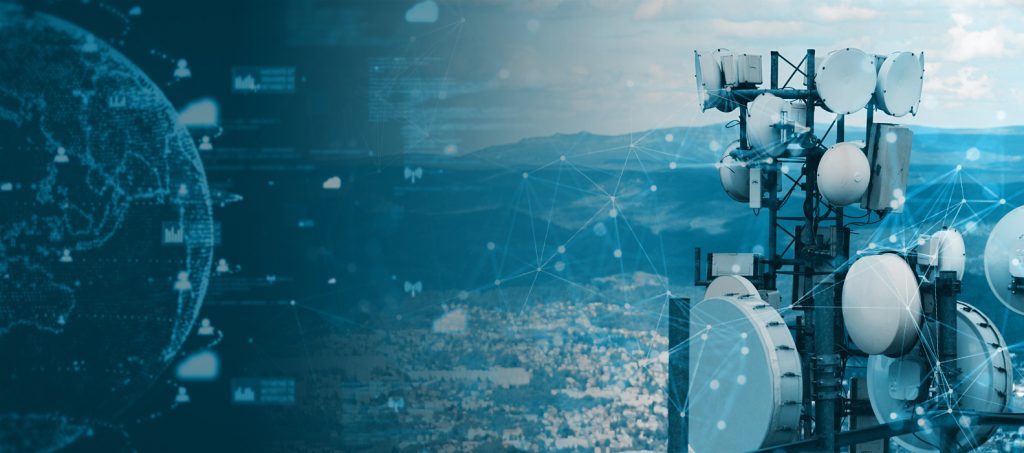It’s a world where inhabitants are on a constant move. Staying connected is the norm and telecom operators know all about it. And with the expectation of staying connected 24×7, telecoms face the critical challenge of deploying high-performance networks that meet the increasing demands for speed, capacity, and coverage. It’s an objective which is achieved through RF Planning. With the complexities introduced by higher frequency bands in 5G, traditional 2D mapping falls short. This is where 3D Mapping for Telecom steps in, transforming how operators design, optimize, and execute 5G Network Planning with precision and efficiency. A modern-day radio frequency planning system covers interference, capacity planning and expansive coverage for telecom userbase.
Challenges in 5G RF Planning
One of the standout features of 5G is in its ability to deliver ultra-low latency and multi-gigabit speeds. However, these capabilities come at a cost — higher frequency signals are more susceptible to attenuation and obstruction. Unlike 4G LTE, which could often penetrate walls and travel farther, 5G’s millimeter waves struggle in dense urban environments.
Common challenges in RF Planning include:
- Signal interference in dense environments due to high-rise buildings and metallic surfaces.
- Line-of-sight obstructions that hinder coverage.
- Limited range and high-power losses in cluttered areas
- Complex reflection and diffraction patterns
These challenges necessitate a more sophisticated approach to modeling the real-world environment, particularly for urban and indoor deployments.
Importance of High-Resolution Mapping
To combat the signal degradation challenges inherent to 5G, high-resolution maps play a pivotal role. These detailed maps incorporate not just roads and landmarks but also elevation, building footprints, and surface textures. High-fidelity environmental data allows telecom engineers to:
- Accurately position small cells and antennas
- Assess signal loss due to physical obstructions.
- Plan for minimal interference and optimal throughput
High-resolution mapping empowers 5G Network Planning teams to simulate network behavior in different conditions before ground deployment, saving both time and cost. This is also essential to know what the network load will be when real-time application takes place.
Role of Digital Elevation Models (DEMs)
A key component of this advanced mapping is the Digital Elevation Model (DEM), a 3D representation of the terrain surface. DEMs are crucial in RF Planning because terrain greatly affects signal propagation. From knowing the possible obstruction owing to disproportionate elevation, a network layout can be planned easily.
For instance:
- Elevated regions can block or reflect signals, creating shadow zones, which means area with weak to zero network coverage.
- Valleys and low-lying areas might experience signal pooling or weak spots.
- Mountainous terrains and ridges require strategic antenna placement to ensure seamless coverage.
By using DEMs, network designers can perform terrain-aware 3D modeling, enabling more precise path-loss calculations and coverage prediction with optimum inventory investment.
Integration of Vegetation and Building Data
To reflect real-world scenarios, 3D Mapping for Telecom has now evolved beyond terrain to include vegetation and building data. Trees, for example, can cause significant attenuation depending on their density. Meanwhile, building materials and heights directly influence signal reflection, diffraction, and absorption.
Incorporating these layers allows telecom engineers to:
- Visualize coverage gaps caused by environmental clutter.
- Analyze the impact of seasonal changes.
- Predict performance in high-density urban zones.
- Plan indoor networks more effectively for campuses and commercial spaces.
This level of detail is vital for mmWave deployment, which is especially vulnerable to non-line-of-sight conditions.
Benefits of Advanced Mapping Tools
Today’s RF Planning teams have access to sophisticated geospatial platforms like rfMap, a tool designed specifically for telecom-grade 3D visualization and planning. rfMap integrates a rich set of data layers, including:
- High-resolution 2D, 2.5D and 3D maps and DEMs
- Building geometry and material classification
- Precise obstacle mapping
- Vegetation types and seasonal variability
- Infrastructure footprints like roads, towers, and poles
With such comprehensive input, rfMap enables:
- Faster time-to-deployment through accurate simulations
- Reduced site surveys and field visits
- Enhanced signal prediction accuracy
- Scalable planning for urban, suburban, and rural environments
rfMap offers realistic and accurate 3D representations of obstacles including detailed individual buildings with superstructures and substructures; the detailed Vegetation Model and other obstacles in terrain enabling precise identification of potential signal blockages for optimized network planning. It is easily integrated with existing Network Planning and GIS software and Drive Test equipment streamlining the planning process.
Conclusion
The future of telecom lies in robust, well-planned 5G networks, and the foundation of those days with hyper connectivity are based on accurate geospatial data and location intelligence. Traditional 2D maps simply cannot provide the depth of information required for modern networks. With the integration of Digital Elevation Models, vegetation, and building data, RF Planning has evolved into a science of precision, more so, with immersive maps and locality information providing insight into antenna placement and network planning capacity.
Tools like rfMap from Lepton Software bring together all critical datasets in a single platform, making 5G Network Planning faster, smarter, and more reliable. As networks scale to meet the demands of smart cities, autonomous vehicles, and IoT, 3D Mapping for Telecom is not just beneficial, it’s essential for the future plans.
By embracing high-resolution, environment-rich mapping, telecom providers can ensure better coverage, faster deployment, and happier customers in the 5G era and beyond.

